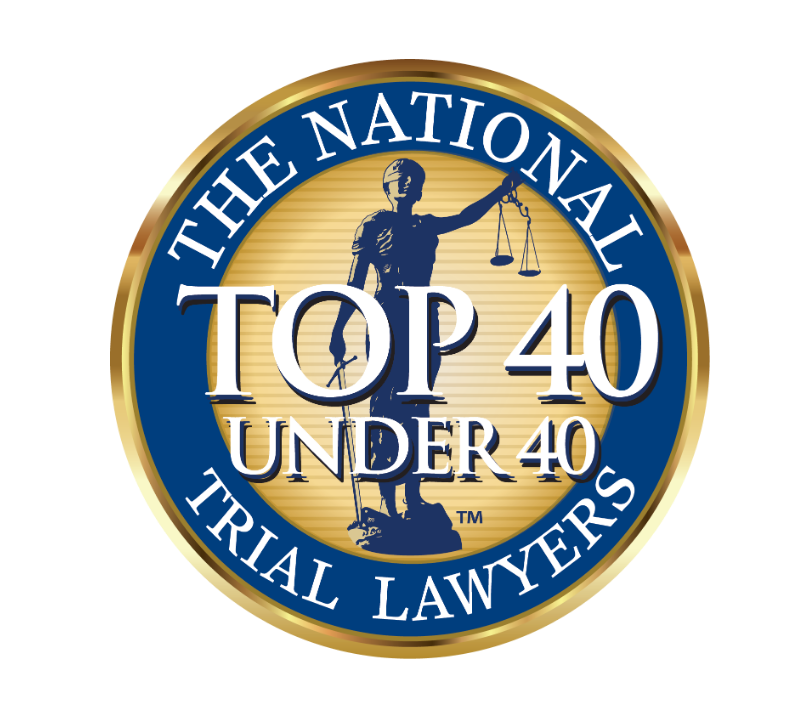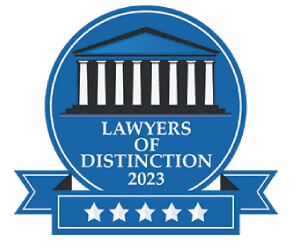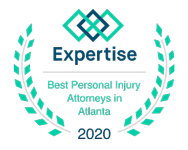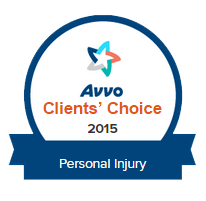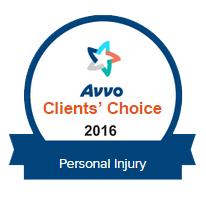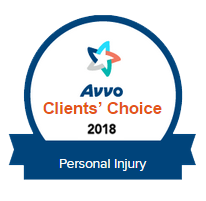According to the Georgia Governor’s Office of Highway Safety, pedestrians have the right of way in many situations. Motorists don’t need to just yield to pedestrians. They need to come to a complete stop and allow pedestrians to cross.
Pedestrians who get hit by motorists and sustain injuries could recover compensation. To recover compensation, a pedestrian accident attorney can help them prove the motorist caused the accident. Compensable losses could include medical bills, lost income, and pain and suffering.
Pedestrians Mostly Have the Right of Way
Georgia does not recognize jaywalking. Jaywalking refers to when a pedestrian crosses the street outside of a crosswalk. In most situations, even without a crosswalk, motorists must allow pedestrians to cross safely.
Consider:
- A pedestrian is in the middle of a crosswalk when the “don’t walk” sign flashes. Motorists must allow the pedestrian to safely cross, regardless of what the sign says.
- A motorist exits an alley, driveway, or building. Here, the pedestrian always has the right of way when crossing.
- A pedestrian crosses the road where two streets meet. In most situations, motorists must let the pedestrian cross safely.
If a motorist strikes a pedestrian while crossing, they could bear liability for any damages.
Frequently Asked Questions About Pedestrians and Their Legal Rights
One may have these questions when learning about pedestrians’ legal rights:
What Constitutes a Pedestrian?
Georgia law describes a pedestrian as any person walking, jogging, running, or standing. If one relies on a wheelchair, they're also considered a pedestrian.
What Should an Injured Pedestrian Do After a Collision?
If a pedestrian gets hit by a car, some considerations could affect their injury claim.
If possible, the pedestrian should:
- Accept medical attention. A pedestrian has no protection from a motor vehicle’s impact. Even if they can stand and walk away from the scene, they should still accept medical attention. Medical attention may include going to the hospital or visiting a healthcare provider.
- Document everything. If possible, an injured pedestrian should take photos of the accident scene and their injuries. Later, their attorney can use these documents to prove fault and liability.
- Report the incident. By notifying law enforcement of the accident, officers can create an accident report. This document will outline the time, date, and location of the crash, along with other details.
- Consider legal help. Pursuing compensation via an insurance claim or lawsuit can quickly get complicated. Partnering with a pedestrian accident lawyer can reduce the stress on the injured claimant. A lawyer can investigate the collision, calculate the injured claimant's damages, and advocate for what they need.
- Refrain from sharing information publicly. Pursuing compensation is a sensitive legal matter. Anything you share online (including on social media) could jeopardize your right to damages.
There are also many things pedestrians should avoid after collisions. For instance, they should refrain from giving recorded statements to the insurance company. Doing so could jeopardize their injury case and prevent them from recovering damages.
When Pedestrians Don’t Have the Right of Way
Although pedestrians have the right of way in many situations, they still must act with reasonable caution. For instance, imagine a situation where a pedestrian darts into the road, not giving cars enough time to stop. Because motorists did not have adequate time to stop, the pedestrian could be in the wrong.
How Long Do Pedestrians Have to Take Legal Action?
Georgia law states in GA Code § 9-3-33 (2020) that pedestrians generally have two years to file their injury lawsuits. Their filing deadline depends on the date of the accident or when a loved one passed away in a collision.
Georgia’s civil court system oversees hundreds of cases each year. It does not have the time or resources to hear cases filed outside the two-year deadline. If one files their case outside the statute of limitations, they could lose the right to seek damages.
How Many Pedestrian Accidents Are There Each Year?
Unfortunately, not all motorists yield to pedestrians as they should. Per the Georgia Governor’s Office of Highway Safety, in 2020, 279 pedestrians lost their lives in motor vehicle accidents.
The Centers for Disease Control and Prevention (CDC) reports that a pedestrian died in one of every six fatal motor vehicle accidents. It also notes that many pedestrian accident cases involve seniors and children under 15.
These Factors Cause Pedestrian Accidents in Georgia
Pedestrian accidents occur for many reasons. Regardless of how a pedestrian accident occurs, the pedestrian could fight to recover compensation for their injuries. Common pedestrian accident causes include:
Failing to Yield to the Pedestrian Who Has the Right of Way
If the pedestrian has the right of way, the motorist must wait until the pedestrian has safely crossed the street. A motorist could bear financial liability for any resulting damages by failing to yield.
Poor Visibility
Drivers can have poor visibility because of:
- Inclement weather. During heavy rain, snow, or fog, the driver might not see clearly what is in front of them. Such weather can lead to striking a pedestrian. Dust and smoke can also lead to poor visibility.
- Poor roadway design. Sharp turns and curves can cause uncertainty while driving. If a crosswalk or walking path is near a sharp turn, the driver could miss seeing the pedestrian until it is too late.
- The driver cannot see out of the windshield. If the windshield is dirty or foggy, the driver cannot see out of it. Motorists are responsible for maintaining their vehicles and promoting visibility.
Driving Under the Influence of Drugs or Alcohol
Motorists driving under the influence of drugs or alcohol can have devastating effects. It can significantly impair someone’s ability to drive.
Driving under the influence can:
- Lower a driver’s ability to concentrate
- Impair motor coordination
- Affect vision
- Slow down reflexes
These impairments can cause a driver to make mistakes on the road, causing catastrophic accidents for pedestrians or other drivers. If a motorist drives while intoxicated and hits a pedestrian, they are liable for the accident. They could also face penalties in criminal court.
Compensation Pedestrians Can Recover After Sustaining Injuries in Georgia
After sustaining injuries in a pedestrian accident, the injured party could file a claim against the liable party. Here, the injured party can recover the damages they incurred because of their injuries. These are called recoverable damages, and they relate to the injured claimant’s accident-related losses.
Economic Damages Account for Direct, Monetary Losses
Economic damages compensate the injured pedestrian for their monetary expenses. The cost of these damages depends on the accident’s circumstances and injury’s severity.
Examples include:
- Medical expenses: Medical care costs could include emergency room visits, ambulance rides, hospitalizations, doctor’s office visits, surgeries, medications, and any other medical-related costs.
- Lost income: Suffering serious harm in a pedestrian accident can cause the victim to miss time from work. Financial recovery can account for lost freelance work, bonuses, tips, and commissions. It can also account for any harm to the injured person’s working ability.
- Any out-of-pocket expenses. Each pedestrian accident comes with its own set of recoverable economic losses. For instance, one may require temporary transportation arrangements to and from doctor’s appointments. They may require assistance with basic tasks, such as bathing and dressing. These miscellaneous expenses are recoverable via legal action.
An attorney can calculate your economic damages by reviewing your receipts, invoices, and bills.
Non-Economic Damages Account for Non-Monetary Losses
Non-economic damages compensate the injured pedestrian for the non-monetary losses they sustained because of their injuries. In addition, non-economic damages intend to compensate the injured pedestrian for the physical and emotional turmoil they endured.
The types of non-economic damages a pedestrian could recover after sustaining injuries could include:
- Pain and suffering: Injury victims could recover compensation for the physical stress they experienced because of their injuries. Pain can include aches, limitations on activity, potential shortening of life, and anguish.
- Emotional distress: This accounts for any mental suffering from a traumatic experience or event. Signs of mental anguish include anxiety, depression, the loss of ability to perform tasks, post-traumatic stress disorder, or fear.
- Disability. Pedestrian accidents can cause life-altering conditions, such as paralysis. Compensation for disability accounts for the hardship of living with a disabling condition.
Wrongful Death-Related Expenses
If the pedestrian passes away from injuries they sustained in the accident, their family members could recover compensation.
Compensation in a wrongful death case can include:
- Final medical expenses: A pedestrian may require extensive medical care before their passing, such as life support or various end-of-life services.
- Loss of consortium: Surviving family members could recover compensation for the loss of companionship and support their loved one provided.
- End-of-life services: Any expenses related to laying the decedent to rest, which includes funeral expenses, celebration-of-life expenses, or the costs associated with the burial or cremation.
This is not an exhaustive list of recoverable damages. How much one can recover depends on their situation. Georgia does not cap how much a pedestrian can seek for their losses after getting hurt.
Injured Pedestrians Can Work with Injury Lawyers
Nobody should have to navigate the claims process alone. Pedestrians have the right to work with injury lawyers who can manage their legal matters. To pursue compensation for an injured claimant’s losses, a lawyer can:
Offer Help on a Contingency-Fee Basis
Many pedestrian accident lawyers work on a contingency-fee-basis. In this arrangement, claimants don’t pay upfront rates or hourly fees. They don’t pay retainers, either. Their attorney takes compensation from their settlement or court award.
With this payment structure, everyone can afford legal aid, regardless of their financial status. Additionally, if the attorney can’t resolve the case, the injured claimant pays nothing for their services.
Identify the Accident’s Cause
A lawyer can investigate the injured claimant’s situation and learn what happened. Using traffic camera footage, the police report, and witness testimony, the attorney can learn what factors caused the collision. Then, they can identify the at-fault and liable parties.
Manage All Relevant Communications
An injured claimant’s phone can ring off the hook after filing a claim and can quickly prove overwhelming. An attorney can manage all phone calls and emails from witnesses, insurance providers, attorneys, and other parties.
They can also give the insurance company the information it needs to process the claim.
Negotiate a Settlement
Many insurance companies offer low initial settlements after receiving a claim. They hope that the injured claimant will accept, thereby ending the case. However, a lawyer can assess any offers and determine whether they meet their client’s needs.
If not, they can negotiate for a fair offer. The lawyer and claimant can also file a lawsuit in civil court and pursue damages via the court system.
File a Lawsuit
Most pedestrian accident cases don’t go to court, per the American Bar Association. Many times, injured claimants recover compensation through insurance negotiations. Yet, if a lawsuit could yield compensation, a pedestrian accident lawyer can file one.
A lawsuit requires them to:

- File it within the statutory deadline
- Exchange information with the other party’s legal team
- Present evidence to the judge and jury
- Assert the injured claimant’s losses
- Prove negligence, fault, and liability
- Apply the law to their case
These are just some of the tasks an injury lawyer can undertake. They have one goal: to recover compensation for their client. Many law firms offer free case reviews where injured claimants can explore their options, ask questions, and learn more.
Pedestrians Have Legal Rights Under Georgia Law
Pedestrians generally have the right of way when crossing the street. This right requires motorists to abide by all traffic laws and signals.
If a pedestrian suffers harm in a collision, they have financial recovery options. Pursuing a claim or lawsuit could yield compensation for their medical bills and other related care costs.
